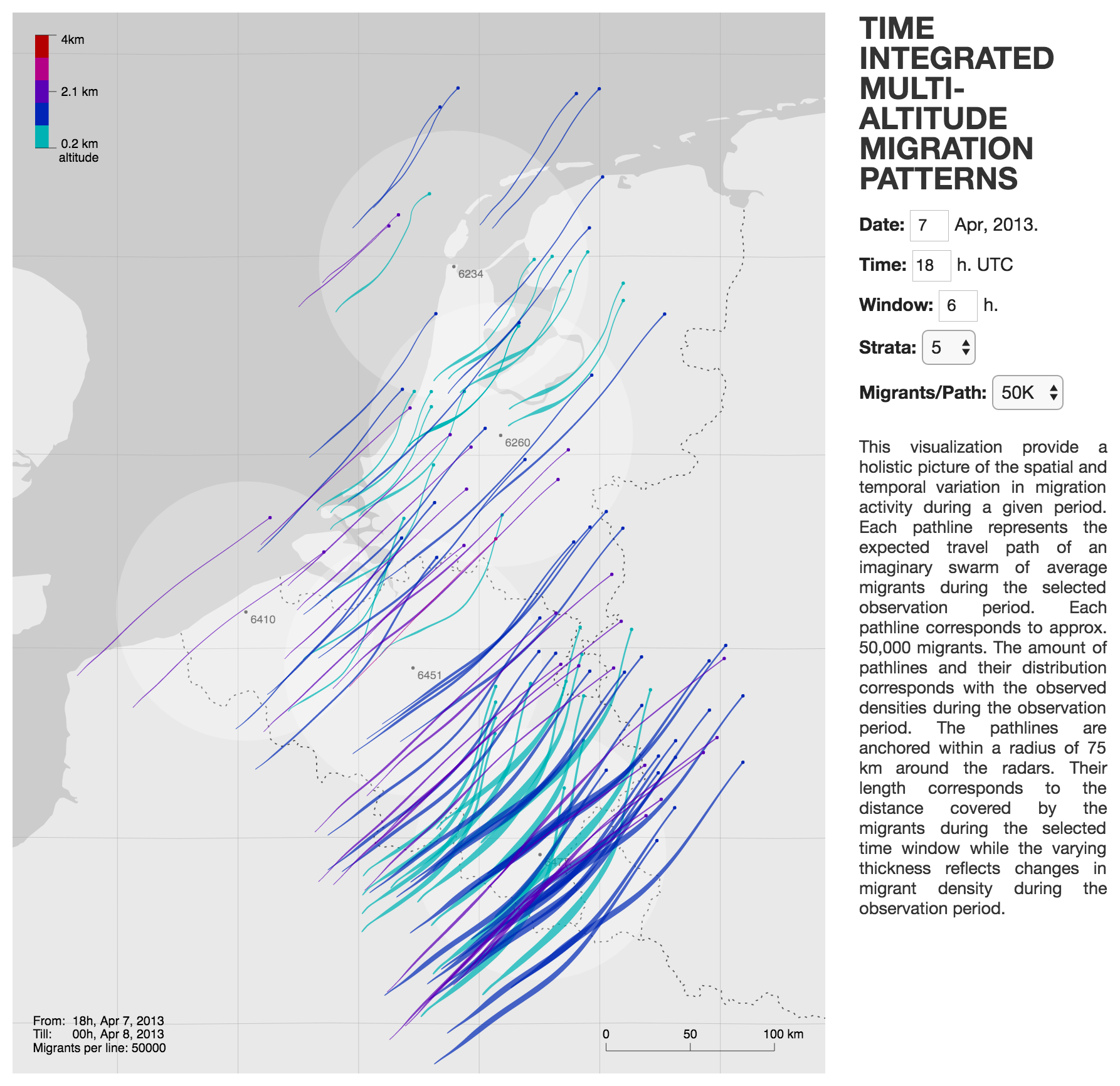Results
Examples
The visualizations utilizes data from five radar locations from The Netherlands and Belgium; Den Helder, De Bilt, Jabbeke, Zaventem, and Wideumont. These visualizations depict general migratory patterns from radar measures interpolated across a sequence of 20-minute time windows. Flow line color indicates height of observation (0.3-3.9 km), density of lines reflects bird density (birds/km3), line length corresponds with ground speed (m/s), and direction of line segments matches the average movement direction (degree).
The flow lines are initialized at random positions within the radar domain (radius 100 km). The amount of lines corresponds linearly to the average density over the full duration of the shown period.
Each flow line consists of a number of segments, one for each time window. The direction of each segment is the average direction observed during the given time window at the given altitude. The length of each section reflects the distance traveled during the time window at the average speed observed during the given time window at the given altitude. Both the speed and the direction are interpolated at the (starting) position of each segment on the map using inverse distance weighting with power 2.
The following examples show the time-integrated flow lines for six consecutive nights for approximately six hours from 21h00 till 3h00 during the spring migration season in 2013.

Night of April 6, 2013, 21h-03h
Night of April 6 2013, 21h-03h

Night of April 7, 2013, 21h-03h
Night of April 7 2013, 21h-03h

Night of April 8, 2013, 21h-03h
Night of April 8 2013, 21h-03h

Night of April 9, 2013, 21h-03h
Night of April 9 2013, 21h-03h

Night of April 10, 2013, 21h-03h
Night of April 10, 2013, 21h-03h

Night of April 11, 2013, 21h-03h
Night of April 10, 2013, 21h-03h








